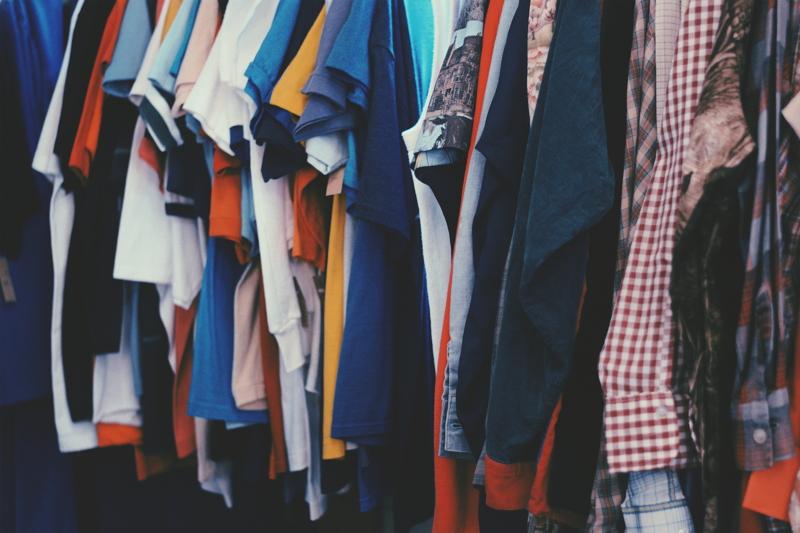El Telégrafo - Used clothing, the affordable option to be fashionable
Does fashion make you uncomfortable? Currently dressing the latest trends or renewing the wardrobe is an impossible mission for men and women. One of the reasons is the price of clothing, which is not always affordable for customers.
In 2016, Vanity Fair magazine published the Zara index, a list that compared the price of these clothes in various countries around the world. For the evaluation, a long velvet dress was taken as a reference. While in Spain, the brand's headquarters, this outfit was sold for 35.95 euros ($40.04), in Ecuador its price was $89. In the period in which the ranking was published, in the country a high tariff imposition for some imported items (surcharges), but this changed in April 2017, when the safeguard for clothing and footwear was lowered from 15 to 10%. That same year, Etafashion, Deprati and RM increased their sales. Between the four they billed $427.6 million. But the reduction in tax surcharges is not enough to make imported garments affordable, says Juan Fernando Salgado, general manager of the second-hand clothing store chain, Amigui. The used clothing business mentor comments in amazement that a brand-name shirt can't possibly cost $180 in a mall. "I, like a lot of people, wouldn't pay that value."
However -says the manager- due to an aspirational issue, people seek to wear a branded garment, but for a much lower price. For them the option is second-hand stores.
Salgado's business, who works with two partners, was born in Quito in 2009 and has eight stores and two collection centers. In the latter, people -by appointment- sell the clothes and shoes that they no longer use and take up space in their closets.

For Amigui to agree to the purchase, the garments must meet certain parameters: not have stains or holes. Neither do you buy clothes that are discolored or that do not have all the buttons or zippers.
Valeria Aguilar, purchasing manager, is in charge of quality control.
She carefully checks the garments that arrive at the collection center one by one.
The price that Amigui pays for the clothes she buys is set through software implemented two years ago.
One of the indicators that dictates value is the brand. The demand for this type of clothing is high.
Carolina Pillajo, a young university student who became a customer of these stores two years ago, knows that “new” clothes arrive at the stores every Monday and Thursday.
The 22-year-old woman says she has no problem dressing in a used Chanel or Dior.
Salgado details that the clothing that his company buys does not receive treatment prior to sale on the premises. The suppliers are the ones who wear the clothes in perfect condition. The only arrangement that is given, to certain garments, is ironing.
Regarding the risk of wearing second-hand clothing, dermatologist Ezequiel Salvador maintains that he knows of no cases of contagion from wearing this type of unwashed clothing.
“There is a fantasy that has to do with ‘go find out where it comes from,’ but they are paranoid fantasies.”
For a bacteria or virus to live on a garment, it has to be very powerful and it is almost impossible for it to pass, adds the specialist.
The trend of giving garments a “second chance” is also in Guayaquil.
Gloría Mejía, fashion blogger for The Trendy Machine portal, explains that the trend seeks environmental responsibility and therefore part of recycling includes purchasing garments from past seasons. That is one of the slow fashion proposals.
The idea is to create an independent and timeless fashion, that lasts longer and transcends.
Pillajo is not only a client of Amigui. He also visits other stores of this type located in the Historic Center and since January he has interacted in three Facebook groups in which users buy and sell (without intermediaries) second-hand clothing, shoes and accessories.
The objective of these spaces, according to Larissa Villavicencio, from the web store Compra mi clóset, is to break the taboos that second-hand clothes are ugly or damaged. For her this option is beneficial for both parties. The seller makes a profit on a garment that "only took up space in his closet" and the buyer buys clothes he likes at a lower price.
In the country, data from the National Survey of Income and Expenses (2012) indicate that 7.90% of Ecuadorian household spending is allocated to the acquisition of clothing and shoes.
For clothing designer Marina Olivo, the next “great trend in fashion” will be the second-hand or resale market, which in English is known as resale.
ThredUP, one of the main second-hand fashion online portals, presented a study analyzing the global situation of this sector and its future plans.
On a global scale, the resale market moves more than $20,000 million and the projection for 2022 is that it doubles, exceeding $40,000 million.
According to the study, the resale business grows 24 times faster than that of traditional stores. Between 2017 and 2018 it increased by 49%, compared to 2% for the rest of the sales systems.
Olivo explains that the key is in the millennials because they gave a 360-degree turn to the way they shop: 40% of these fashion consumers between the ages of 18 and 24 bought some resale product in 2017.
In his book Clothing Poverty, Andrew Brooks, Professor of Development Studies at King's College London reveals that in the US, most of the clothing that people donate ends up in Latin America. This despite the fact that in four countries in the region, including Ecuador, this import is not allowed.
Art. 99 of the Production Code dictates that reshipment will be mandatory for prohibited merchandise, except clothing. This will be donated to the Ministry of Economic and Social Inclusion. (YO)
